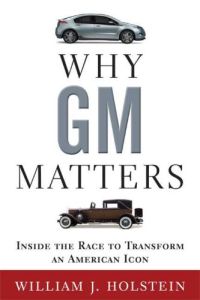Join getAbstract to access the summary!

Join getAbstract to access the summary!
William Holstein
Why GM Matters
Inside the Race to Transform an American Icon
Walker & Company, 2009
What's inside?
Why General Motor’s profitability and relevance matters to you
Recommendation
Everything reported in this book is just right – you only need to adapt to its time frame: The book ends with the 2008 national recession. It explains how General Motors hit a financial crisis in 2005, and how former CEO Rick Wagoner and his team tried to fix things before the federal bailout. Business journalist William J. Holstein’s cast of characters includes not only Wagoner and fabled former CEO Bob Lutz, but also a whole constellation of designers, engineers and marketing specialists in Asia, Europe, Australia and Detroit. Holstein tells GM’s story complete with behind-the-scenes sagas about the Camaro, the Volt, OnStar and the rise of Buick in China. All this is intriguing information, and the author’s insights remain valid even though the book ends with Wagoner testifying twice before Congress in 2008 before his ouster by the feds. Holstein fills you in on the situation before Wagoner’s departure, the government takeover of GM and Toyota’s recall crisis. If the events leading up to GM’s fall and rebirth still intrigue you, getAbstract believes this book delivers fresh reporting about the auto giant and its biggest drama.
Summary
About the Author
Car buff William J. Holstein won awards as a United Press International foreign correspondent, an editor at Business Week, and an economic reporter for U.S. News and World Report.
















Comment on this summary